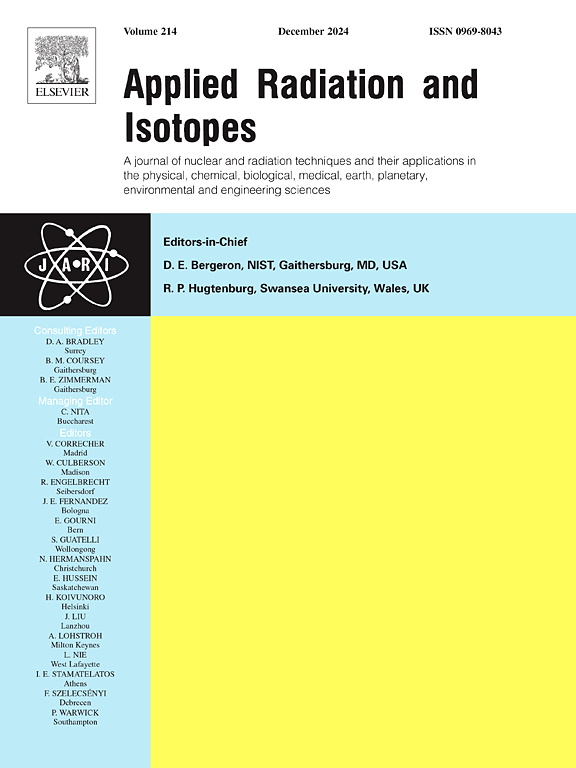Analysis of Trap Parameters Associated with Intermediate Luminescence Peaks of Quartz
IF 1.6
3区 工程技术
Q3 CHEMISTRY, INORGANIC & NUCLEAR
引用次数: 0
Abstract
This research focuses on the thermoluminescence parameters associated with intermediate luminescence peaks in quartz. By employing isothermal decay analysis, TL difference curves, and the initial rise method, we aim to identify and characterize the trap structures contributing to the TL signal. The results indicate that the TL glow peaks do not conform strictly to first- or second-order kinetics, suggesting a more complex trapping and recombination mechanism.
Analysis of TL difference curves with different Tstop temperatures, obtained by digitally subtracting the residual TL signal, facilitates the identification of three stable Tm stability regions at 145°C, 170°C, and 235°C. The glow curve obtained following isothermal cleaning at ten different temperatures, ranging from 90°C to 170°C, was analyzed to calculate the activation energy using the initial-rise method. The results indicate that the apparent activation energy decreases as the segments of the glow curve are cleaned at increasing Tstop temperature. The findings contribute to a more accurate understanding of TL kinetics in quartz, with implications for dosimetric applications.
石英中间发光峰相关阱参数分析
本文主要研究石英中与中间发光峰相关的热释光参数。通过等温衰减分析、TL差曲线和初始上升方法,我们旨在识别和表征产生TL信号的圈闭结构。结果表明,TL发光峰并不严格符合一阶或二阶动力学,表明其捕获和重组机制更为复杂。通过对残差TL信号进行数字减除,得到不同Tstop温度下的TL差分曲线,可以识别出145℃、170℃和235℃三个稳定的Tm稳定区。分析了在90 ~ 170℃10种不同温度下进行等温清洗后的辉光曲线,并采用初始上升法计算了活化能。结果表明,随着Tstop温度的升高,表观活化能随着发光曲线段的清洗而降低。这些发现有助于更准确地理解石英中的TL动力学,并对剂量学应用产生影响。
本文章由计算机程序翻译,如有差异,请以英文原文为准。
求助全文
约1分钟内获得全文
求助全文
来源期刊

Applied Radiation and Isotopes
工程技术-核科学技术
CiteScore
3.00
自引率
12.50%
发文量
406
审稿时长
13.5 months
期刊介绍:
Applied Radiation and Isotopes provides a high quality medium for the publication of substantial, original and scientific and technological papers on the development and peaceful application of nuclear, radiation and radionuclide techniques in chemistry, physics, biochemistry, biology, medicine, security, engineering and in the earth, planetary and environmental sciences, all including dosimetry. Nuclear techniques are defined in the broadest sense and both experimental and theoretical papers are welcome. They include the development and use of α- and β-particles, X-rays and γ-rays, neutrons and other nuclear particles and radiations from all sources, including radionuclides, synchrotron sources, cyclotrons and reactors and from the natural environment.
The journal aims to publish papers with significance to an international audience, containing substantial novelty and scientific impact. The Editors reserve the rights to reject, with or without external review, papers that do not meet these criteria.
Papers dealing with radiation processing, i.e., where radiation is used to bring about a biological, chemical or physical change in a material, should be directed to our sister journal Radiation Physics and Chemistry.
 求助内容:
求助内容: 应助结果提醒方式:
应助结果提醒方式:


